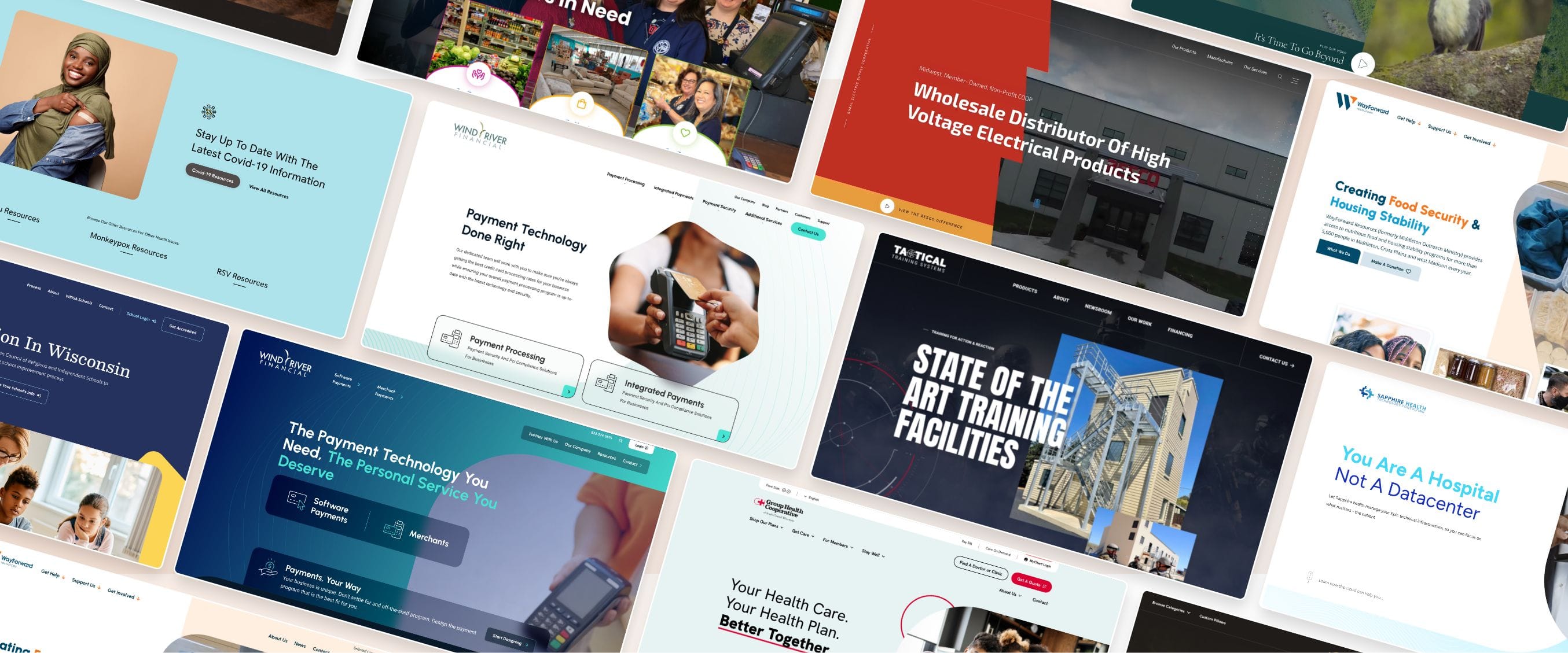How Website Design Can Drive More Traffic to Your Online Store
How Website Design Can Drive More Traffic to Your Online Store
Blog Article
Boost Interaction With Cutting-edge Site Design Solutions
In the realm of electronic interaction, the significance of innovative website style options can not be overstated. An attentively crafted customer experience, underpinned by tactical visual layout and interactive elements, can dramatically enhance individual involvement. By checking out numerous methods such as receptive design and individualized content, companies can produce a platform that not just captivates individuals yet also cultivates long-term loyalty. Nonetheless, the challenge hinges on recognizing the nuances of user habits and choices. This elevates an essential concern: what specific methods can be implemented to guarantee that a site stays user-centric and engaging?

Recognizing User Experience
Understanding individual experience (UX) is crucial for creating reliable website layout remedies, as it straight affects exactly how users connect with digital systems. A detailed UX strategy encompasses various elements, including usability, customer, and access fulfillment, every one of which add to the overall efficiency of a site.
To start with, use concentrates on just how conveniently users can browse and locate the info they seek. Accessibility makes certain that all users, consisting of those with disabilities, can efficiently engage with the website.
Moreover, recognizing customer personalities is vital for tailoring the experience to meet details audience needs. By performing customer research and testing, developers can gather understandings that notify layout decisions, making sure the site not just meets visual goals but likewise fulfills practical needs. Inevitably, a thoughtful method to UX style fosters interaction, motivates retention, and enhances total individual satisfaction, which are important for the success of any kind of digital system.
Visual Style Techniques
Including efficient aesthetic design techniques is necessary for recording customer attention and boosting the overall user experience on a web site. A well-balanced aesthetic pecking order guides individuals via the web content, allowing them to conveniently soak up and browse info. This can be achieved with the critical usage of typography, color pattern, and spacing, which collectively produce a engaging and natural design.
Shade plays an essential function in developing and evoking feelings brand identity. Utilizing a well balanced shade combination that aligns with the brand name's values can cultivate familiarity and trust. Furthermore, including high-grade pictures and graphics boosts visual allure and can considerably enhance individual engagement.
Whitespace, commonly ignored, is equally important as it permits web content to breathe and stops frustrating individuals with mess. It promotes easier reading and understanding, resulting in a much more satisfying browsing experience.
Finally, uniformity in design components-- such as switch fonts, designs, and icons-- makes certain a smooth individual trip, strengthening the brand name's professionalism. By tactically executing these visual design techniques, sites can not only bring in site visitors however likewise encourage them to stay longer and engage even more deeply with the content.
Interactive Components for Involvement
Engaging customers successfully typically rests on the implementation of interactive elements that welcome engagement and cultivate a dynamic searching experience. These components, including quizzes, surveys, and interactive infographics, motivate users to proactively get involved instead of passively take in content. By incorporating such functions, websites can not just record interest however also enhance individual retention.

Gamification is another effective approach. Integrating game-like components, such as success or rewards for completing jobs, can change ordinary communications right into delightful experiences. This method not only increases engagement however also motivates users to return, developing a devoted audience.
Moreover, interactive elements can help with social sharing, amplifying a web site's reach. Functions like comment areas, share switches, and user-generated material locations foster community communication, turning site visitors into energetic individuals. website design. Ultimately, the critical use of interactive aspects is essential for producing a engaging and compelling web site that reverberates with customers
Adaptive and responsive Layout
A properly designed site must prioritize adaptive and responsive layout to make certain optimal individual experiences across a variety of gadgets and display dimensions. Responsive style uses fluid grids and versatile images, enabling the layout to immediately readjust based on the customer's screen size. This technique makes certain that customers can easily navigate and communicate with the web content, no matter whether they are using a mobile phone, tablet, or desktop computer .
In contrast, adaptive layout makes use of predefined formats that are customized to particular device categories. This Discover More suggests that the site finds the type of device being utilized and serves the proper design, which can enhance packing times and optimize the display screen of essential components. While both methods aim to boost use, responsive style is often preferred for its fluidness and smooth change between gadgets.
Incorporating receptive and flexible layout not just improves user satisfaction but also positively influences internet search engine positions. Internet search engine focus on mobile-friendly sites, thus increasing exposure and bring in more site visitors. For that reason, spending in these style approaches is important for businesses aiming to involve their audience successfully and maintain an affordable edge in today's digital landscape.
Analyzing Customer Comments and Information
Customer feedback and information evaluation are essential elements of efficient internet site style, as they give important insights into user habits and preferences. By systematically gathering and taking a look at user feedback with surveys, usability testing, and analytics tools, developers can determine discomfort points and areas for improvement. This data-driven method enables organizations to adjust their site components, guaranteeing that the individual experience straightens with audience expectations.
Analyzing metrics such as bounce prices, time on web page, and click-through rates supplies a quantitative perspective on customer interaction. These metrics help developers determine which web content resonates and which areas might require optimization. A/B screening can be utilized to assess variations in design, allowing designers to make enlightened decisions based on individual interactions.
Including individual comments not only improves web site usability but also cultivates a feeling of neighborhood and trust fund. Involving with customers with comments loops cultivates commitment and urges repeat gos to. Ultimately, leveraging customer feedback and data evaluation is important to producing a dynamic, user-centered website that adjusts to developing user needs and choices, consequently driving higher engagement and contentment.
Verdict

A thoughtfully crafted customer experience, underpinned by calculated aesthetic style and interactive components, can significantly enhance customer interaction.Including efficient visual style methods is essential for catching customer focus and enhancing the general user experience on an internet site.User comments and data analysis are crucial components of efficient web site style, as they provide useful insights right into customer actions and preferences. Ultimately, leveraging individual responses and information analysis is indispensable to creating a dynamic, user-centered internet site that adjusts to advancing user needs and preferences, thus driving higher engagement and complete satisfaction.
In conclusion, innovative web site layout options dramatically improve user involvement by prioritizing customer experience, using efficient aesthetic techniques, and integrating interactive aspects.
Report this page